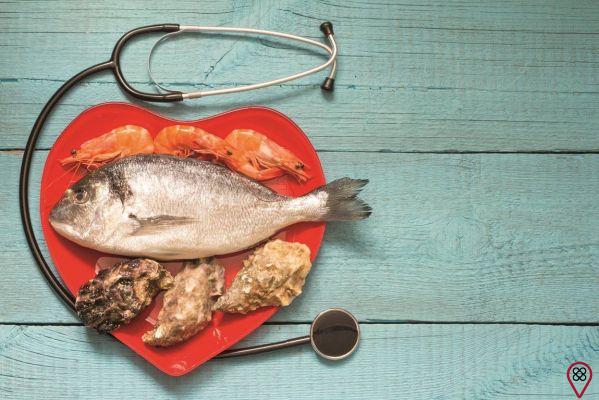
In addition to being extremely delicious and having an infinite number of ways to prepare it, fish is an excellent source of energy for our body. It has properties that the body itself cannot generate, thanks to the fact that it is rich in iron and protein. What's more, it's rich in nutrients and flavor, helping to prevent cardiovascular disease.
You can consult a nutritionist to find out how to correctly add this ingredient to your diet.
The most recommended foods by experts
According to experts, fish can replace meat if consumed in equal portions, as it is a source of protein and iron that helps revitalize the body, helping to protect it against infections.
Amino acids are very important elements for health as they help maintain muscle mass, playing a dual role in the body. We can get these fatty acids by eating fish meat. That's why this food is recommended and important in diets for weight maintenance, to increase body mass, to lose weight, among others.
It is generally recommended to consume 3 to 4 servings per week. In addition to being rich in protein, iron and amino acids, it also contains vitamins D and B, omega 3, calcium, iodine, potassium and a smaller amount of calories.
What are white and blue fish and which is the most suitable?
Whitefish: Whitefish are characterized by having a low calorie and fat content and living in deeper waters. They provide between 15% and 20% of protein for the body, as well as vitamins and minerals such as phosphorus, copper, iron and calcium. Whitefish also promotes growth, so it is an important element for children and teenagers. Helps prevent hypothyroidism, cardiovascular and degenerative diseases. It also contains anticarcinogenic properties. Within this category are hake, hake, bass, pacamão and sole.
Blue fish: this food has a high fat content, which varies according to size, time of year and water temperature. It is rich in proteins, oleic, linoleic, omega 3, minerals such as magnesium, iron, iodine, among others; and vitamins A, D and B12. It helps to reduce blood triglyceride levels, thrombosis, arterial vasodilation and blood pressure. In general terms, blue fish or fatty fish differ from white fish in that they have more than 5 grams of fat for every 100 grams of meat. In this group are salmon, tuna, sardines, trout and anchovies.
You might also like:
- Food tips that help fight cardiovascular disease
- Find out about the benefits of fish in children's diets
- Identify the types of fish that are healthiest
- Develop a food balance in your menu
It is considered that one is not better than the other, as both types of fish have enough nutrients to be included in the weekly menu, especially Mediterranean fish.
More benefits of fish
● Intellectual development
Thanks to the amount of minerals, vitamins and nutrients contained in fish, their consumption promotes intellectual development. This is due to its role in memory, learning and concentration. Especially oily fish help to activate cognitive skills.
● Helps reduce heart problems
Whether it's white or blue fish, their intake helps protect against cardiovascular diseases, thanks to the correct balance of HDL cholesterol levels and a decrease in LDL cholesterol levels. In this way, the risk of cardiovascular disease is reduced.
● Good for digestion
As fish contains more fibrous protein and less collagen, it is much easier to digest. The less collagen, the more tender the food, which makes it easier to digest.
Although fish is an essential food and it is important to include it in our weekly diet, we should consult a specialist who can help us maintain a diet based on the nutrients we really need.
At doctoranytime, you will find the best professionals near you.

























